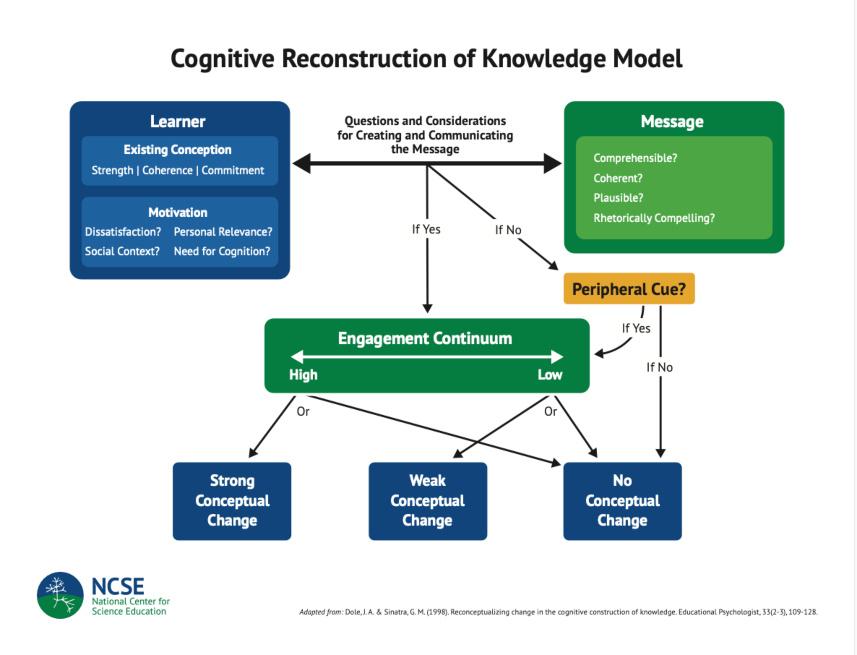NCSE's Approach to Resolving Misconceptions
NCSE’s curricular and pedagogical approaches were created with thoughtful consideration for how teachers can effectively identify and help students resolve misconceptions. Because misconceptions are complex, addressing them requires considering the many different variables that influence them, as well as what is required from the curriculum and teaching strategies to resolve them effectively.
Learner
The first step in resolving misconceptions with students is to identify the misconceptions that they bring into the classroom. Perhaps the most effective tool for uncovering student misconceptions is the Driving Question Board (DQB), an integral part of NCSE’s lessons. This tool allows teachers to hear students’ initial understandings and ideas related to a topic.
Once misconceptions are identified, students must be dissatisfied with their existing conceptions to be open to considering new ideas and information. This dissatisfaction and need for cognition can be encouraged by providing students with tools for understanding the scientific process as well as for identifying misconceptions, misinformation, and pseudoscience. To help students identify misinformation and faulty arguments, NCSE lessons include explicit Nature of Science instruction as well as introductions to data and media literacy tools such as DataWISE.
Message
After identifying students’ misconceptions and motivating them to engage with new ideas and information, the next factor to consider is the message. It must be comprehensible, coherent, plausible, and rhetorically compelling in order for students to consider adding it to their conceptual understanding.
NCSE’s lessons use phenomenon-based, three-dimensional storylines grounded in authentic data to offer the coherence and relevance that students need to understand new ideas. Additionally, NCSE advocates for using BRAVE Classroom Practices to ensure that students are open to engaging with the curriculum in a rhetorically compelling and non-confrontational way.
Engagement Continuum
The most crucial element of the knowledge reconstruction process is the students’ interaction level with the message or curriculum. Engagement includes “hands-on” and “minds-on” interaction with the curriculum throughout the learning process and occurs on a spectrum from low cognitive engagement to high metacognitive engagement.
NCSE’s lessons offer frequent opportunities for students to apply what they are learning to authentic situations or problems, engage in discussions with their peers, and self-assess using a variety of metacognitive strategies in order for them to create substantial, lasting conceptual change.
Peripheral Cues
Students respond better to new concepts or ideas that conflict with their misconceptions when they have role models who do not find conflict between scientific conceptions and their political or religious beliefs. These role models are especially compelling if they complement the teacher’s voice and come from a person the students see as an authority who shares their cultural, religious, or political identity or belief.
Consider supplementing NCSE’s lessons with appropriate guest speakers whom the students find trustworthy and compelling. These speakers could include local professionals, farmers, healthcare workers, engineers, scientists, meteorologists, politicians, members of the clergy, or even other educators.
Download this article as a PDF.

